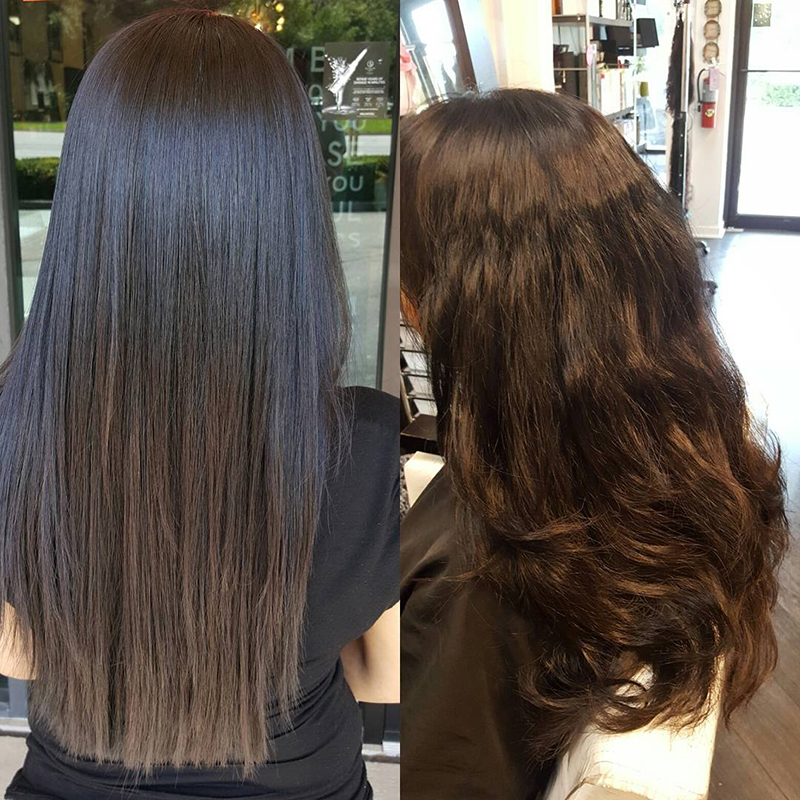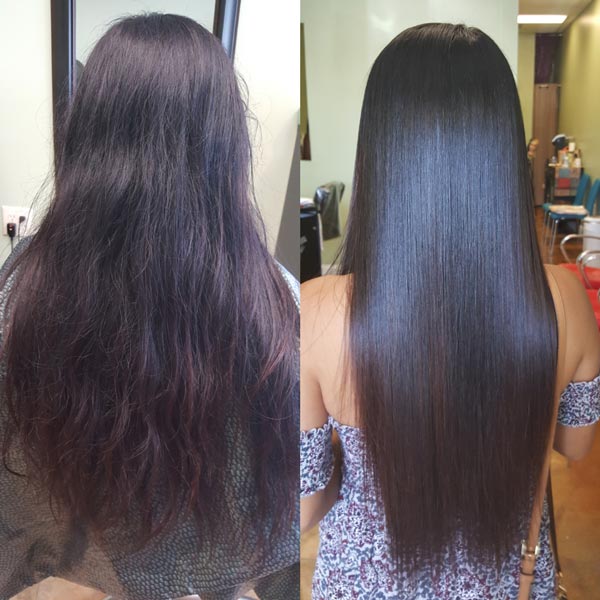Japanese hair straightening is a popular way of permanently straightening hair that originated in Japan in the 1990’s. This process will turn wavy, coarse, or curly hair into pin-straight locks.This permanent hair straightening process has many benefits. The most obvious one is the sleek, frizz free look. But beyond the appearance factor, the greatest benefit is time saved each day on not having to fight to dry, wavy or curly hair with a blow dryer and brush. Hair that has been straightened by thermal reconditioning is much quicker to dry. It requires very little attention out of the shower, giving you a professional look with minimal effort. You are also saved from the hassle of fighting frizz from humidity or physical activity.The Japanese hair straightening process is extensive, taking at least 3 to 5 hours.
1) Consultation
- Have you had a perm before?
- Have you ever undergone chemical treatments?
- Have you used color before?
- Do you use relaxers?
- Do you consider your hair to be dry?
2) Shampoo
The actual straightening process will begin with a shampoo and partial drying.
Protein treatment and other pre-treatment are sprayed unto hair to moisturize, even porosity and balance ph as well as a solution to slowdown chemical reaction on areas that are more delicate and dry.
3) Solution is Applied
4) Ironing
5) Neutralizer
6) Blow Dry
“Angella is incredible! I was very hesitant to have Japanese hair straightening done because I’ve had my hair “permanently straightened” at another salon in the past that did not do anything for my hair except damage it. I am SO happy I decided to trust Angella to do this treatment because my hair could not have turned out better. Before, my hair was unmanageable and a hassle to deal with on a daily basis. I would spend hours straightening it with a flat iron only to walk outside and have it frizz up instantly. Since the Japanese hair straightening I step out of the shower and let my hair air dry and it is perfectly straight, soft, and smooth with no effort! If you’re considering Japanese hair straightening, definitely go to Angella! Her work speaks for itself!”
“Angela is the best stylist you could get! I drive to her from Tallahassee to Jacksonville just to have her do my hair. I get the Japanese Permanent Straightening and Anti-frizz treatment done for my roots every few months and let me tell you, she is not only the most affordable, she is the BEST (I have curly, slightly kinky hair/fro). People with half of Angela’s talent will charge you at least twice as much. My hair is much softer and more manageable than it’s even been. She truly cares about your hair and will give it the time, attention and energy it needs. She is under recognized. I highly recommend!”


